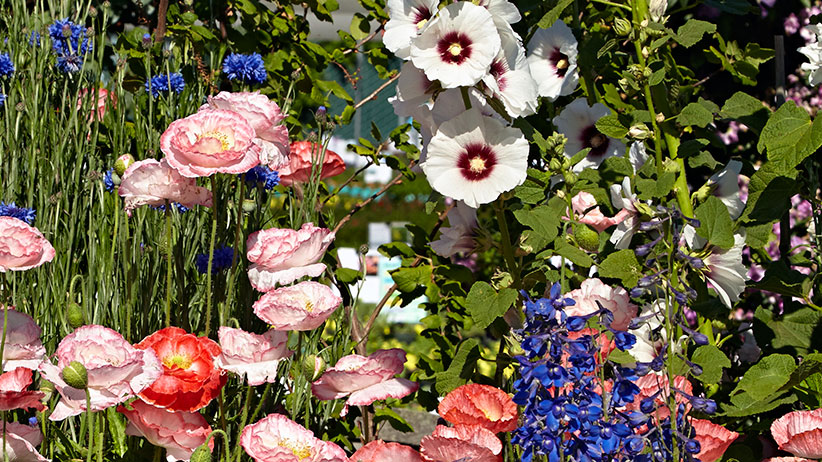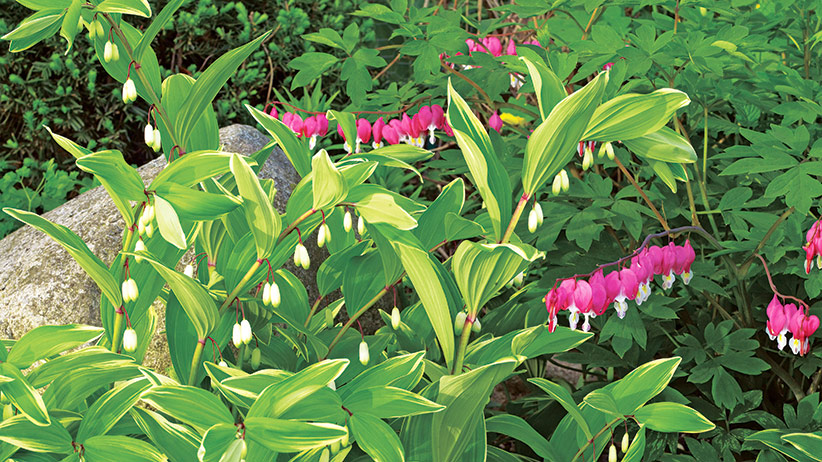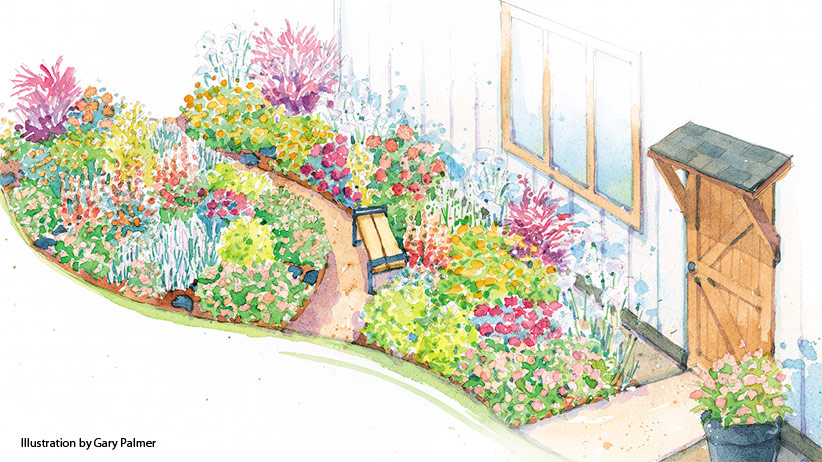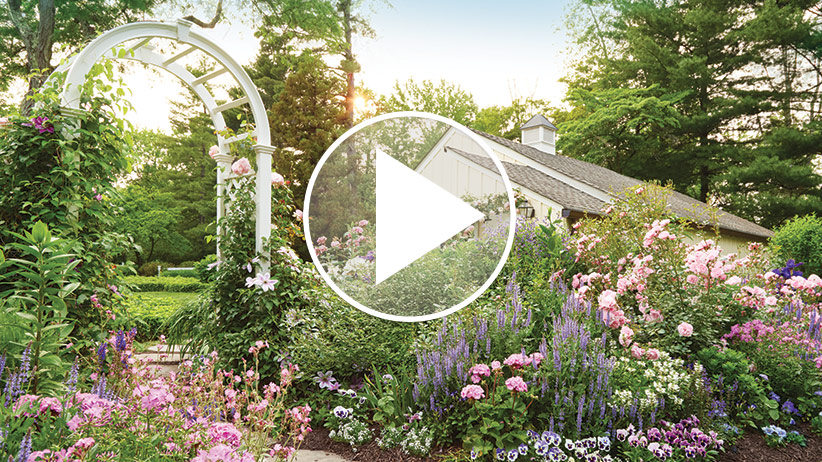Cut flower garden combinations
You’ve waited all winter so cherish your spring garden before it comes and goes too quickly. When you grow a cut flower garden that blooms in the spring, you’ll have enough flowers to fill your beds and borders outside, your vases inside — and maybe even the homes of your friends and neighbors.
Here is some important info to help you grow and harvest your best cut flower garden. Then scroll down to the bottom of the page for three plant combos perfect for creating dreamy spring (and summer) cutting gardens.
You Might Also Like:
Garden Design Ideas
How to arrange your cut flower garden
Design the garden the same way you would design an arrangement of cut flowers. Use tall blooming flowers in the center of the bed or in the back if planting in a border. To contrast the vertical shape of the flower spikes, surround the tall plants with round, solid-shaped bloomers, such as the scabiosa, allium and corn poppy in the photos below. This way every bloom gets a chance to show off their alluring beauty — and practice for their role in the vase.
How to harvest cut flowers from the garden
If you’re hesitant to clip your blossoms for fear of leaving your garden bare, know that cutting many of these plants — corn poppies, delphiniums, snapdragon and lupines — will encourage more blooms to form. It’s frustrating to bring your garden’s flowers inside only to have them quickly wilt and waste. The good news is you can prevent this! Follow these tips:
- Harvest flowers in the morning when temperatures are cool.
- Bring a bucket of lukewarm water and a clean, sharp cutting tool to the garden with you.
- For stems with multiple flowers, make sure at least one bud is showing color and close to blooming; for stems with one flower, cut when the flower is just barely in bloom.
- Immerse the cut ends into the bucket right away.
- Before arranging, cut the stems again, but this time under water and at a 45-degree angle.
Cut flower garden planting ideas
Check out the plant combinations below that will make for a great cut flower garden that you can snip for beautiful homegrown bouquets!
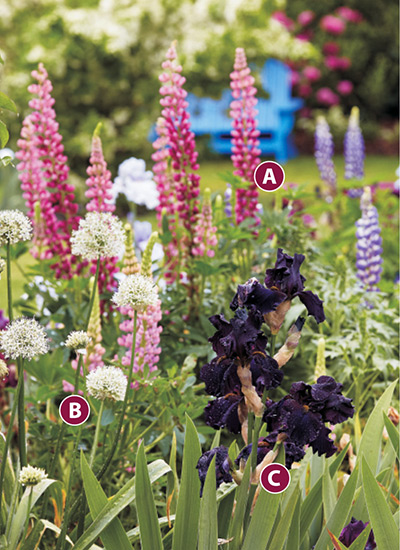
Plant a variety of flower shapes
A) Lupine (Lupinus Gallery Series)
Type Perennial Blooms Spikes of white, purple, blue and pink blooms late spring to midsummer Light Full sun to part shade Size 18 to 24 in. tall, 15 to 18 in. wide Hardiness Cold-hardy in USDA zones 4 to 8
B) Allium (Allium stipitatum ‘Mount Everest’)
Type Bulb Blooms large globe-shaped blooms of small, white florets in late spring to summer Light Full sun to part shade Size 24 to 36 in. tall, 6 to 10 in. wide Hardiness Cold-hardy in USDA zones 4 to 9
C) Bearded Iris (Iris ‘Men in Black’)
Type Perennial Blooms Large dark purple blooms in mid- to late spring Light Full sun Size 24 to 36 in. tall, 12 to 18 in. wide Hardiness Cold-hardy in USDA zones 3 to 9
Vase advice:
-
For flowers with hollow stems, such as hollyhocks, delphiniums and lupines, turn the cut stems upside down, fill with water, and plug the end with a piece of cotton ball to ensure water reaches the top.
-
Be careful with dark shades of iris as their blooms can drip from the arrangement and stain countertops and tablecloths.
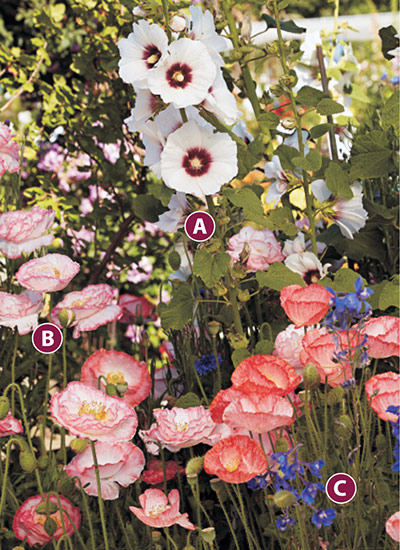
Highlight focal flowers
A) Hollyhock (Alcea rosea ‘Halo Blossom’)
Type Biennial Blooms White blooms with crimson center in early summer Light Full sun Size 5 to 6 ft. tall, 1 to 3 ft. wide Hardiness Cold-hardy in USDA zones 2 to 10
B) Corn poppy (Papaver rhoeas ‘Falling in Love')
Type Annual Blooms Mix of semidouble and double blooms in shades of pink in summer Light Full sun Size 9 to 18 in. tall, 6 to 12 in. wide
C) Delphinium (Delphinium (Belladonna group) ‘Bellamosum’)
Type Perennial Blooms Small bright blue flowers on tall spikes spring through summer Light Full sun to part shade Size 24 to 48 in. tall, 14 to 18 in. wide Hardiness Cold-hardy in USDA zones 3 to 7
Vase advice:
- Some flowers, like hollyhocks and corn poppies, ooze a sappy substance that can inhibit water intake. Cauterize the bottoms of these stems by holding them in boiling water for 10 to 20 seconds or over a flame until ends are no longer seeping.
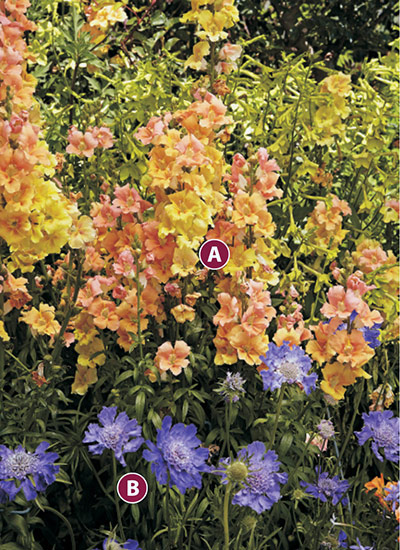
Mix cut flowers in complementary colors
A) Snapdragon (Antirrhinum majus ‘Chantilly Peach’)
Type Tender perennial (usually grown as an annual) Blooms Spikes of pink, peach and yellow flowers in early summer Light Full sun to part shade Size 24 to 36 in. tall, 9 to 12 in. wide Hardiness Cold-hardy in USDA zones 7 to 10
B) Pincushion flower (Scabiosa caucasica ‘Fama’)
Type Perennial Blooms 2- to 3-in. lavender-blue blossoms spring through summer Light Full sun Size 18 to 24 in. tall, 12 to 18 in. wide Hardiness Cold-hardy in USDA zones 3 to 7
Vase advice
- Cut snapdragons early in the morning when they are most fragrant!
- When using long stems with multiple blossoms, make sure the stem is at least 1½ - 2 times the height of the vase to keep proportions pleasing.



